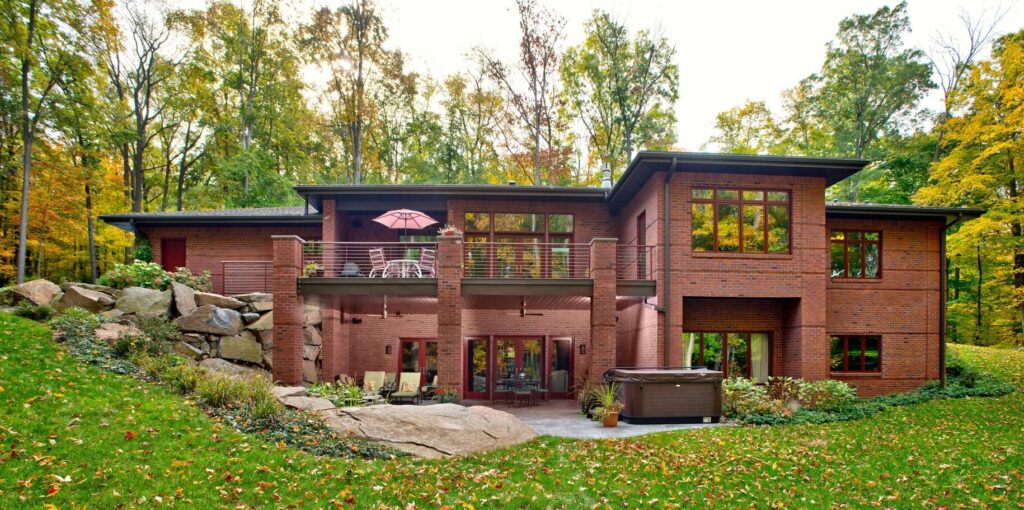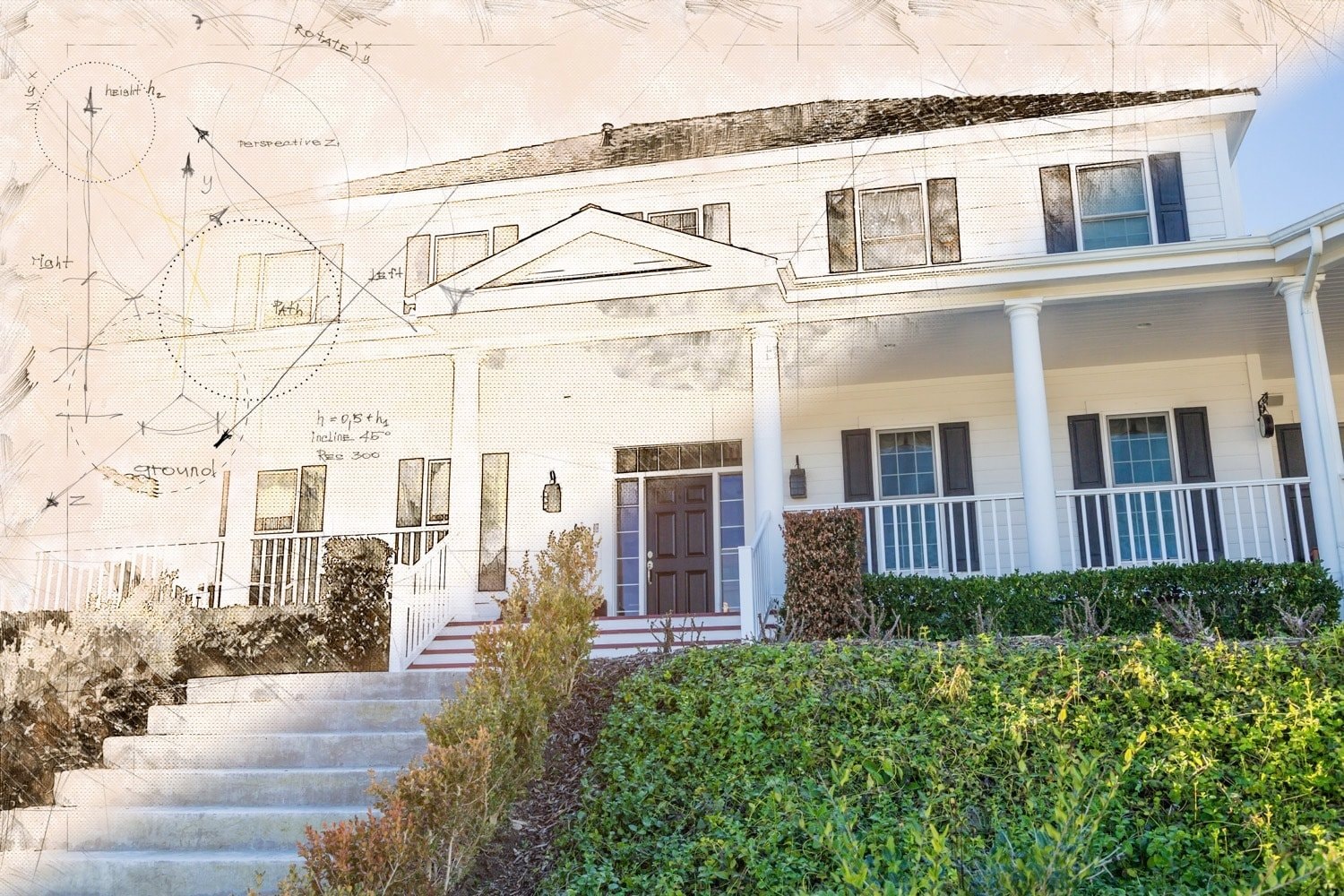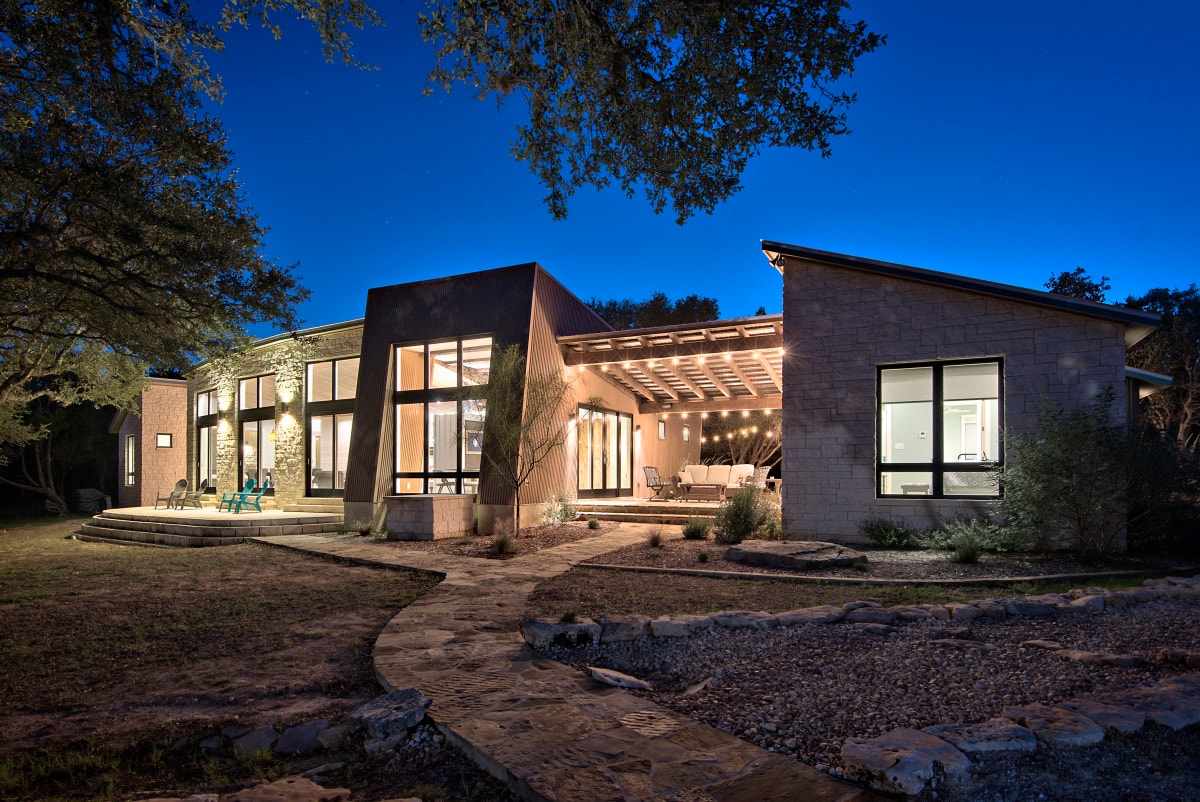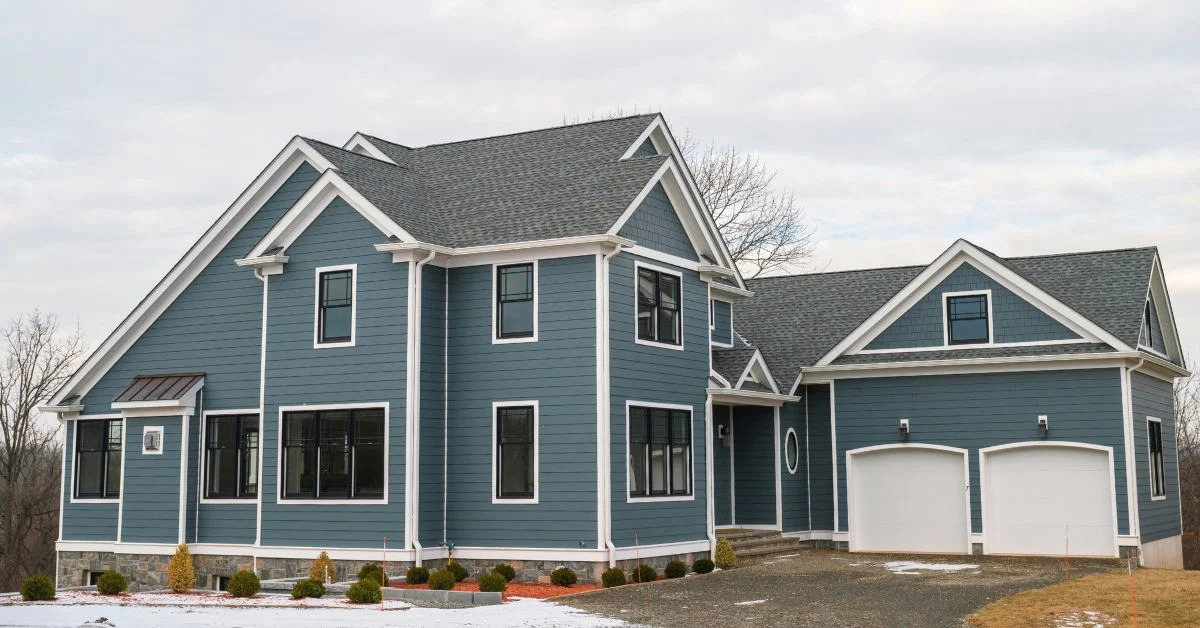Building a quality custom home on a budget is both an exciting and challenging venture. Achieving affordable luxury requires a strategic approach to the home building process, focusing on effective planning, wise material choices, and cost management. Quality in custom home construction is essential not only for ensuring durability and longevity but also for creating a comfortable and efficient living space tailored to your needs.
At RJT Construction, we specialize in building custom homes that balance budget and quality. With extensive experience in the construction industry, we understand the intricacies of the home building process and are committed to delivering homes that meet the highest standards of craftsmanship and customer satisfaction.

Understanding the Basics of Custom Home Building
A custom home is a unique, one-of-a-kind residence designed to meet the specific needs and preferences of the homeowner. Unlike pre-built homes, custom homes offer the flexibility to tailor every aspect of the design, from the layout and materials to the finishes and features.
The home building process involves several stages, starting with planning and design, followed by securing financing, obtaining necessary permits, and finally, the construction itself. Each phase requires careful coordination and attention to detail to ensure the successful completion of your dream home.
Planning Your Home Building Project
Proper planning is the cornerstone of any successful home building project. It ensures that all aspects of the construction are well thought out and helps in avoiding costly mistakes and delays. Start by determining your overall budget and identifying your primary needs and preferences for your custom home.
To kick off your home building project, follow these essential steps:
- Define Your Budget: Establish a clear budget that includes all associated costs, such as land, design, construction, and finishes. This will guide your decisions throughout the project.
- Choose Your Location: Select a build site that meets your requirements and fits within your budget.
- Hire an Experienced Builder: Engage a reputable home builder or design-build firm like RJT Construction to guide you through the process.
- Develop Detailed Plans: Work with your builder to create detailed plans and designs, ensuring all your specifications are met.
- Secure Financing: Explore financing options such as construction loans or a one-time close mortgage to fund your project.
- Obtain Permits: Ensure all necessary permits and approvals are in place before construction begins.
By following these steps and focusing on proper planning, you can set a solid foundation for building a quality custom home on a budget.
Creating a Realistic Budget
Creating a realistic budget is crucial for managing your custom home building project effectively. Start by determining your overall budget, taking into account your financial situation and long-term goals. Be realistic about what you can afford to avoid financial strain later on.
Consider all associated costs, including land acquisition, design fees, construction expenses, permits, and finishing touches like landscaping and interior decor. It’s essential to factor in every potential expense to prevent budget overruns.
Breaking down the budget into key categories can help manage expenses better. Allocate specific amounts for major categories such as land, design, construction materials, labor, and finishes. This approach enables you to monitor spending and make adjustments as needed, ensuring you stay within your budget while still achieving your vision for a quality custom home.
Understanding the Cost per Square Foot
The cost per square foot is a critical metric for budgeting your custom home. Several factors influence this cost, including the types of materials used, the complexity of the design, and the location of the build site. For instance, custom features or intricate architectural details can significantly increase the cost per square foot.
Typically, the cost per square foot for a custom home ranges from $125 to $175, although this can vary based on the specifics of your project and location. Investing in energy-efficient home features such as solar panels, high-quality insulation, and energy-saving windows can also impact the cost per square foot. While these features might increase upfront costs, they offer long-term savings on utility bills and enhance the overall value and sustainability of your home.
Selecting the Right Building Materials
Choosing the right building materials is crucial for balancing quality and cost-effectiveness in your custom home. Opt for materials that provide durability and longevity without exceeding your budget. Cost-effective materials like reclaimed doors, prefab panels, and precast concrete can offer both affordability and high quality.
Energy-efficient and sustainable materials are also worth considering. These include items such as high-quality insulation, energy-efficient windows, and sustainable roofing materials. While these might have a higher initial cost, they contribute to lower energy bills and a smaller environmental footprint over the long run.
Examples of cost-effective materials include reclaimed doors, which add character and reduce waste; prefab panels, which speed up construction and reduce labor costs; and precast concrete, which offers strength and durability at a reasonable price. Working with an experienced builder or design-build firm can help you choose the best materials for your budget and quality requirements.
Choosing an Experienced Builder
Hiring a knowledgeable home builder is crucial for ensuring the success of your custom home building project. An experienced builder brings expertise, reliability, and quality craftsmanship, ensuring that your vision is realized efficiently and effectively. Working with a design-build firm offers additional benefits, such as integrated services and streamlined communication.
These firms manage both the design and construction processes, providing a cohesive approach that can save time and reduce potential issues, ultimately leading to a smoother project experience and a high-quality custom home.
The Role of Detailed Plans and Designs
Detailed plans and designs act as a roadmap for your custom home building project, guiding every stage from initial concept to final construction. They ensure that all aspects of the home are meticulously planned, reducing the likelihood of errors and costly changes during construction.
Early plan approval is crucial as it allows you to identify and address any potential issues before construction begins. This proactive approach helps in maintaining the project timeline and budget, ensuring a seamless transition from design to building.

Managing Construction Costs
Effective strategies for reducing construction costs are essential for building a quality custom home on a budget. One approach is to simplify the design, focusing on functional yet cost-effective elements. Reducing complexity in architectural details can significantly cut down on labor and material costs.
Choosing durable materials is another key strategy. While some materials might have a higher upfront cost, their longevity and low maintenance requirements can save money over the long run. For instance, opting for high-quality insulation and energy-efficient windows can reduce energy bills and increase the home’s overall efficiency.
Additionally, working closely with a design-build firm can help you manage construction costs. These firms provide accurate cost estimates and help you make informed decisions about where to invest and where to save. They can also suggest alternative materials and construction methods that meet your quality standards without breaking the bank, ensuring that your home building project stays within budget and meets all your expectations.
Financing Your Custom Home
Understanding your financing options is critical for a successful custom home building project. Construction loans are designed specifically for building a new home, providing the necessary funds throughout the construction process. One popular option is a one-time close mortgage, which combines the construction loan and permanent mortgage into a single loan. This can save money on closing costs and simplify the financing process.

Working with specialized lenders who have experience with construction loans can provide additional benefits. These lenders understand the unique challenges of home building and can offer tailored advice and solutions. They can also help you navigate the complex paperwork and requirements, ensuring a smoother financing experience.
Navigating the Construction Process
Clear communication is paramount during the construction process to ensure the project stays on track. Establishing a foundation of open, consistent communication with your builder helps in relaying your vision and expectations. Active engagement in project discussions allows you to stay informed about progress and make timely decisions.
Builder transparency about timelines and costs is crucial. Your builder should provide regular updates on the project’s status and any potential changes that might impact the budget or schedule. This transparency helps prevent misunderstandings and ensures that any issues are addressed promptly, maintaining the project’s momentum and aligning with your budget.
Regular Site Visits and Inspections
Regular site visits and inspections are essential for monitoring the progress of your custom home. These visits allow you to ensure that the construction aligns with the detailed plans and that quality standards are maintained. By being present on-site, you can catch potential issues early, allowing for timely solutions and preventing costly delays or repairs.
Hiring a third-party inspector adds an extra layer of assurance. An independent inspector can provide an unbiased assessment of the construction quality, identifying any problems that may not be immediately apparent. This additional scrutiny helps ensure that the home is built to the highest standards and meets all your specifications.
Regular inspections also help in staying within budget by ensuring that the construction process adheres to the planned schedule and cost estimates. By addressing any discrepancies immediately, you can avoid unexpected expenses and keep the project on track financially. This proactive approach ensures a smooth construction process and a high-quality custom home.
Energy-Efficient Home Features
Incorporating energy-efficient home features offers numerous benefits, including reduced energy bills, increased comfort, and a smaller environmental footprint. High-quality insulation can significantly improve your home’s thermal efficiency, keeping it cooler in the summer and warmer in the winter.
Solar panels are another excellent investment, providing a renewable energy source that can lower electricity costs and increase your home’s value. Using energy-efficient materials not only enhances the sustainability of your custom home but also ensures long-term savings and improved livability.
Considering Your Space Needs
Determining your space needs is a crucial aspect of planning your custom home. Start by deciding how many bedrooms you need based on your current family size and future plans. Consider additional space for specific rooms that enhance functionality and comfort, such as a laundry room, home office, or extra storage areas.
Planning for more space where needed ensures that your home meets your lifestyle requirements and can accommodate future changes, providing a living space that remains practical and enjoyable for years to come.
Roofing and Exterior Materials
Choosing cost-effective roofing materials is essential for balancing budget and durability in your custom home. Asphalt shingles are a popular choice due to their affordability, ease of installation, and durability. They offer good protection against the elements and come in various styles and colors to match your home’s aesthetic.
The impact on overall cost and durability is significant, as quality roofing materials can reduce maintenance expenses and extend the lifespan of your roof, ensuring your home remains secure and attractive over time.
Finalizing Your Custom Home
Completing the final walk-through and inspection is a critical step in ensuring your custom home meets all your expectations and specifications. During this process, thoroughly check every detail and address any issues before closing. This ensures that all necessary repairs and adjustments are made at the builder’s expense, providing peace of mind that your home is in perfect condition.
Moving into Your New House
For a smooth move-in process, plan ahead by organizing your belongings, hiring professional movers, and scheduling utility connections. Take your time settling in and arranging your new space. Finally, enjoy the satisfaction of living in your dream home, custom-built to fit your needs and preferences.
Early Planning and Design Process
The planning process is the foundation of building a custom home. Early planning ensures that all aspects of the project are thoroughly considered, from the initial concept to the final design. Securing plans approved early in the process can save costs and prevent delays. Working with experienced home builders during the design process can help you create a budget-friendly home that meets all your needs.

They can provide valuable insights and suggestions, helping you make informed decisions that align with your budget and vision. A well-structured planning process is crucial for building a house that combines quality and affordability.
Incorporating Existing Structures to Save Costs
If your project involves an existing structure, consider incorporating it into your new custom home to save costs. Retrofitting or renovating parts of an existing building can be more budget-friendly than starting from scratch. For example, retaining foundations, walls, or utility connections can significantly reduce construction costs.
Additionally, repurposing existing structures can provide unique design opportunities and character to your custom home. Collaborating with home builders experienced in renovations can ensure that the integration of old and new elements is seamless and cost-effective, ultimately contributing to a more efficient and sustainable building process.





